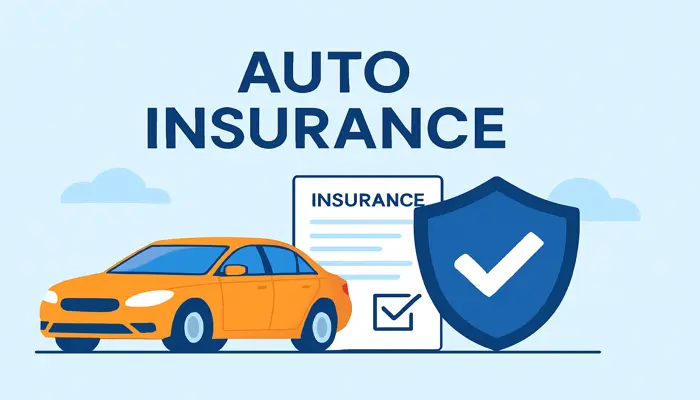Introduction
- Owning a vehicle comes with responsibilities, and one of the most crucial aspects is ensuring financial protection against accidents, theft, and damages. Auto insurance provides security by covering liabilities, repair costs, and medical expenses. In this blog, we’ll explore what auto insurance is, its types, benefits, key considerations, and frequently asked questions.
What is Auto Insurance?
- Auto insurance is a contract between a vehicle owner and an insurance company. The policyholder pays premiums, and in return, the insurer provides financial coverage for damages, third-party liabilities, and medical expenses resulting from accidents or unforeseen incidents.
- It safeguards against financial losses due to accidents, theft, natural calamities, and legal liabilities.
Types of Auto Insurance
1. Liability Insurance
Covers expenses for injuries and damages caused to others in an accident where you are at fault.
Pros: Mandatory in most regions, covers third-party liabilities. Cons: Does not cover your own vehicle’s damage.
2. Collision Insurance
Pays for the repair or replacement of your car after an accident, regardless of fault.
Pros: Covers damage to your own vehicle. Cons: Higher premiums, deductible applies.
3. Comprehensive Insurance
Provides coverage for non-collision-related damages such as theft, vandalism, natural disasters, and fire.
Pros: Broad protection, includes theft and weather damage. Cons: Higher premiums compared to basic policies.
4. Personal Injury Protection (PIP)
Covers medical expenses for you and your passengers regardless of who is at fault.
Pros: Covers medical costs, lost wages, and rehabilitation. Cons: Not available in all states/countries.
5. Uninsured/Underinsured Motorist Coverage
Provides financial protection if you are hit by a driver with little or no insurance.
Pros: Essential for protection against uninsured drivers. Cons: Increases premium costs.
6. Gap Insurance
Covers the difference between the car’s current value and the remaining loan amount if the vehicle is totaled.
Pros: Protects against financial loss for leased/financed vehicles. Cons: Not needed if the car is fully paid off.
7. Roadside Assistance Insurance
Covers emergency services such as towing, flat tire changes, and jump-starts.
Pros: Provides peace of mind, useful for emergencies. Cons: May be redundant if covered by a vehicle warranty.
Frequently Asked Questions (FAQs)
1. Is auto insurance mandatory?
Yes, liability insurance is required in most regions to cover third-party damages.
2. What factors affect auto insurance premiums?
Factors include driving history, car model, location, coverage type, and age.
3. Can I lower my insurance premium?
Yes, by maintaining a clean driving record, choosing higher deductibles, and availing discounts.
4. What happens if I drive without insurance?
You may face fines, license suspension, or even legal penalties depending on your location.
5. Does auto insurance cover theft?
Only comprehensive insurance covers theft, not basic liability insurance.
6. How can I file a claim?
Notify your insurer, provide necessary documents, and get the vehicle inspected for damage assessment.
7. Can I transfer auto insurance when selling my car?
Yes, some insurers allow transfer to the new owner, but a fresh policy is often required.
Conclusion
- Auto insurance is essential for financial security and legal compliance. Understanding the different types of coverage, benefits, and key considerations will help you choose the right policy. Compare options, assess your needs, and ensure adequate protection for your vehicle and financial well-being.

